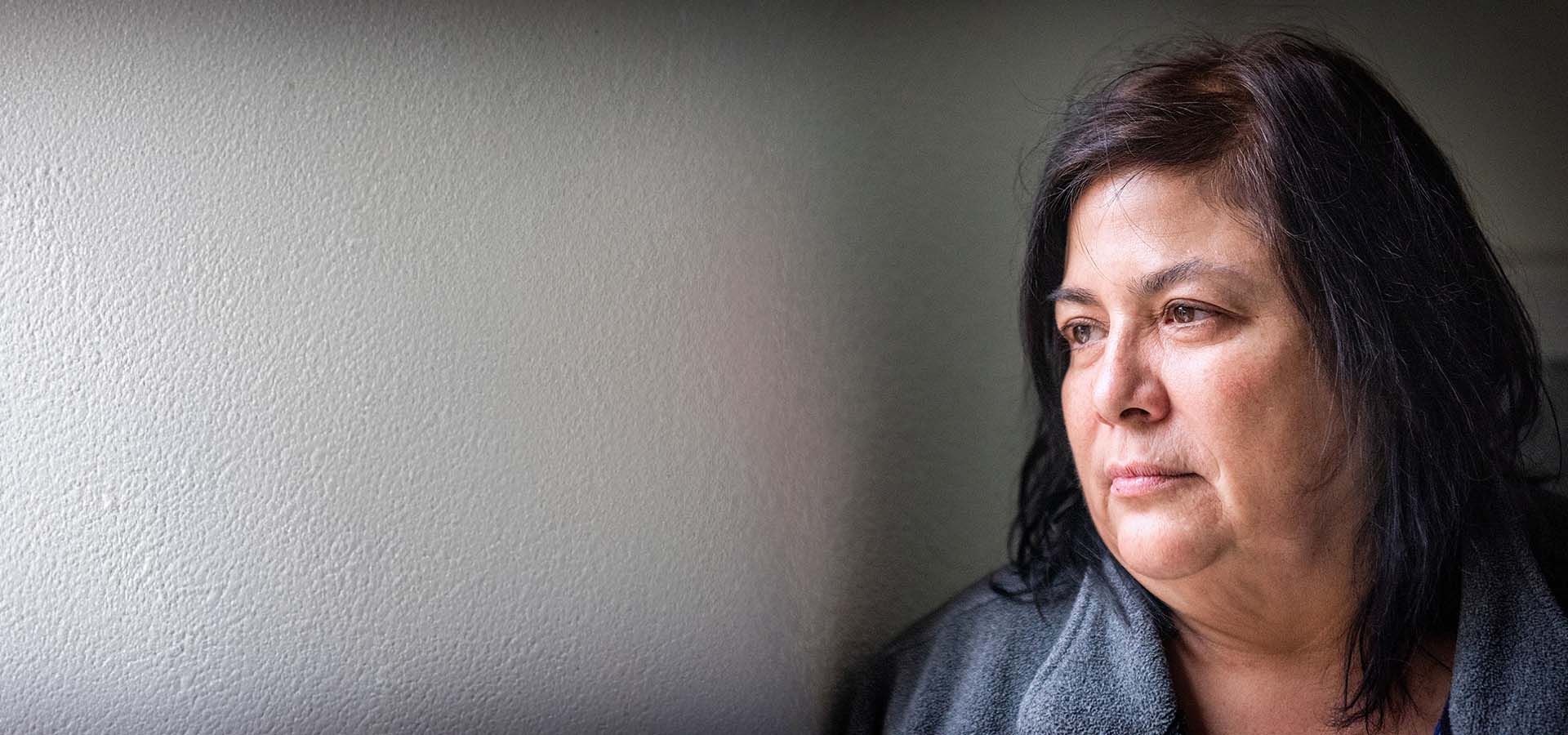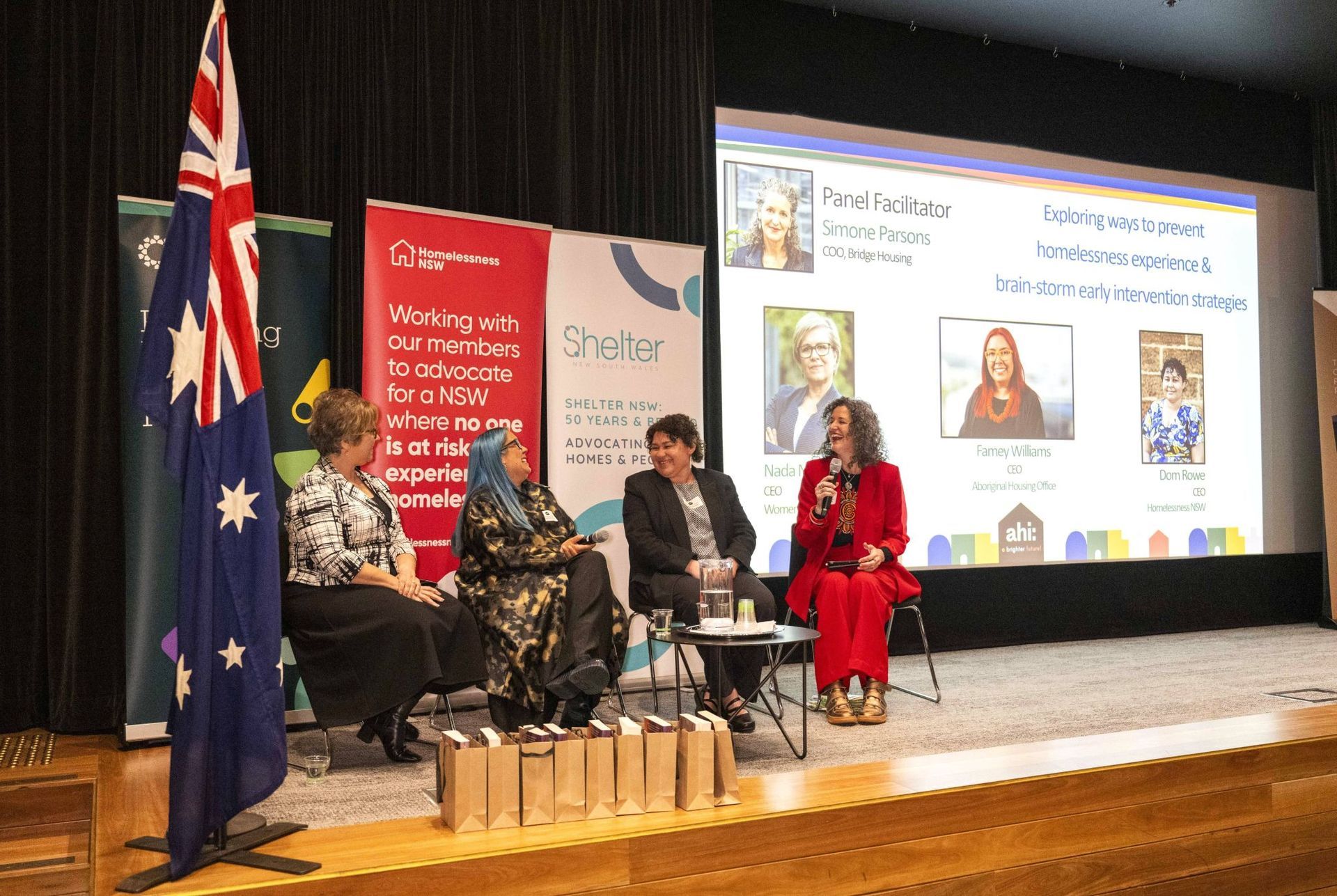Stacey Northover
Believe Housing Australia
Let’s start with a story…
Andrea* is a frontline worker living in Adelaide, which has recorded the lowest vacancy rates in the nation. She helps provide emergency assistance to an increasing number of people who’d never sought support before the housing crisis hit.
When Andrea’s landlord recently gave her and her partner 90 days’ notice to vacate their rental property, she too found herself facing homelessness or, at the very least, significant rental stress to secure a property.
Her story is not unique for essential Australian workers including childcare staff, nurses, social workers, hospitality workers and cleaners. Andrea says she and her partner were both employed and yet struggled to find a rental property in Adelaide that could meet their rent budget of $400 per week.
“Our applications kept getting rejected. It’s very depressing. You start to doubt whether you’ll ever find somewhere to live.”

“We didn’t think we would have so much trouble finding a place,” she says. “Every inspection we went to had queues of so many people there, all trying to find a private rental like us. Our applications kept getting rejected. It’s very depressing. You start to doubt whether you’ll ever find somewhere to live.”
It took Andrea three months to find a property that was not affordable, not suitable and was much further away from work, adding transport costs to an already stretched budget.
“We’ve had to tighten our budget a lot,” Andrea says. “We can’t enjoy a lot of the things we used to, like going out. We’re lucky we were able to extend the budget on our rent. We have somewhere to live. A lot of other people don’t.”
As mentioned, Andrea’s story is not a unique one…
… A full-time childhood educator can only afford to rent nine of 1,496 private properties listed in metropolitan Adelaide. Let’s repeat that: Nine… Fully employed social workers fare a bit better in metro Adelaide, with 10 affordable properties in their budget… School teachers have a choice of 13 affordable homes.
These are the unsettling statistics revealed in Anglicare Australia’s recently released Rental Affordability Snapshot on essential workers. Alarmingly, these are men and women in full-time work. The new figures compound existing concerns over affordable housing stock and the need for sustained, long-term, bi-partisan reform across all sectors.
The Rental Affordability Snapshot weekend was taken from 17th March 2023, when 1,839 private properties were listed for rent across South Australia, including 1,496 in Adelaide (North, South, West and Central and Hills).
The results shows that less than 3.1% of the 1,496 private rentals listed in metro Adelaide were affordable to essential workers. These are workers who keep the state running on the frontline during even the most trying of times at the height of COVID. They are paramedics, cleaners, construction workers, delivery drivers, hospitality workers, teachers and childcare workers.
It’s clear that in Adelaide – which has recorded the lowest rental vacancy rates in the nation, along with rising rent – even those working in full-time essential service jobs are struggling to keep a roof over their heads. We know the situation is dreadful for those on the lowest incomes, but the data is now showing the housing system is also failing those on moderate to middle incomes, including workers employed full-time.
The very people who cared for us during COVID – our nurses and other frontline workers – are the ones who now can’t afford to put a roof over their heads. We must do better.
The Snapshot survey of 1,839 private rental listings across the wider state of South Australia also revealed:
“Even the highest paid essential workers tested could afford only 7% of available rental properties.”
These results show that essential workers right across SA are finding it tough to afford housing within their own communities. Even the highest paid essential workers tested could afford only 7% of available rental properties.
Our essential workers are vital to the functioning, liveability and wellbeing of our communities. The surging cost of housing is contributing to workforce shortages in these essential industries. If no action is taken, both the workforce crisis and the housing crisis will continue to grow. We must do better.
Believe Housing Australia is a nationally accredited Tier 1 community housing provider, and we support community housing industry bodies calling for the sustained construction of more affordable housing across South Australia and the nation. The recent collaborative support of the Labor Government’s Housing Australia Future Fund (HAFF) from the Greens and Senate cross bench is a good start to providing more affordable housing.
We, like many other housing providers, have shovel-ready projects for the release of HAFF funds to support Australians priced out of the rental market, including essential workers.
More affordable housing will fill the gap for essential workers competing in the same private rental market as people on higher incomes. Without help, they don’t stand much of a chance of finding a secure, affordable rental that meets their needs. Sadly, this is a situation being experienced by essential workers across the nation. Nationally, the Anglicare Australia Rental Affordability Snapshot of essential workers shows just 428 rental properties are affordable to an early childhood educator.
“Among those with the least options for rentals within their budgets are hospitality workers – just 424 affordable homes from 45,895 listings nationally.”
For others, such as ambulance workers, they’re priced out of more than 97% of the private rental market. Among those with the least options for rentals within their budgets are hospitality workers – just 424 affordable homes from 45,895 listings nationally.
Even if tenants on lower incomes are able to secure a rental property, it often means making difficult choices between essential items; often going without food, heating or other basics to meet rising rents – much like frontline worker Andrea, who shared her story with us to build better understanding.
The sad reality is there are some far worse off than Andrea, and we can see evidence of this on our city streets and parks late at night or early in the morning through the presence of tents, swags and fogged-out cars piled-up with sleeping bags. We must do better.
People living with disability and pensioners are among those who face the most unique challenges in this overheated housing market. We know that a single person on the Disability Support Pension can afford none of the rentals at the time of the Snapshot, even before taking into account individual needs regarding the suitability of properties.
“For a couple living on the Age Pension, only eight rentals, or one per cent, were affordable. Single retirees could afford just six of the listed properties.”
For a couple living on the Age Pension, only eight rentals, or one per cent, were affordable. Single retirees could afford just six of the listed properties. We must do better.
We know home ownership is declining among older Australians, and more people are entering retirement with a mortgage, so it’s easy to see how older people have become more vulnerable to housing stress and homelessness. It’s clear the situation is dreadful for those on the lowest incomes and, while relief is on the way, people in need will have to wait up to a year or more for the first affordable homes under HAFF to eventuate.
The HAFF is a five-year housing plan that includes the construction of 30,000 new and affordable social homes. This is commendable and greatly needed after decades of social housing stock decline. What’s equally important is that HAFF creates long-lasting reform and a framework that will, hopefully, be utilised to continue affordable housing growth as part of good development and policy practice in perpetuity to avoid getting caught out by another housing crisis like this one.
With the HAFF and other funding coming through, we do believe that all tiers of government and the community housing sector are in the best position we’ve been to find and action long-term solutions to end the housing crisis.
We strongly believe everyone should have access to an affordable, safe and secure home as a basic human right.
Let’s get it right. Because we must do better.
*Andrea did not wish to provide her surname to protect her privacy


We acknowledge the Wathaurong, Yuin, Gulidjan, and Whadjuk people as the traditional owners of the land where our team work flexibly from their homes and office spaces. Ahi Australia recognises Aboriginal and Torres Strait Islander peoples as the first inhabitants of Australia and the traditional custodians of the lands where we live, learn and work. Ahi New Zealand acknowledges Māori as tangata whenua and Treaty of Waitangi partners in Aotearoa New Zealand.
Copyright © 2023 Australasian Housing Institute
site by mulcahymarketing.com.au